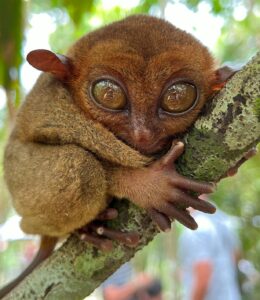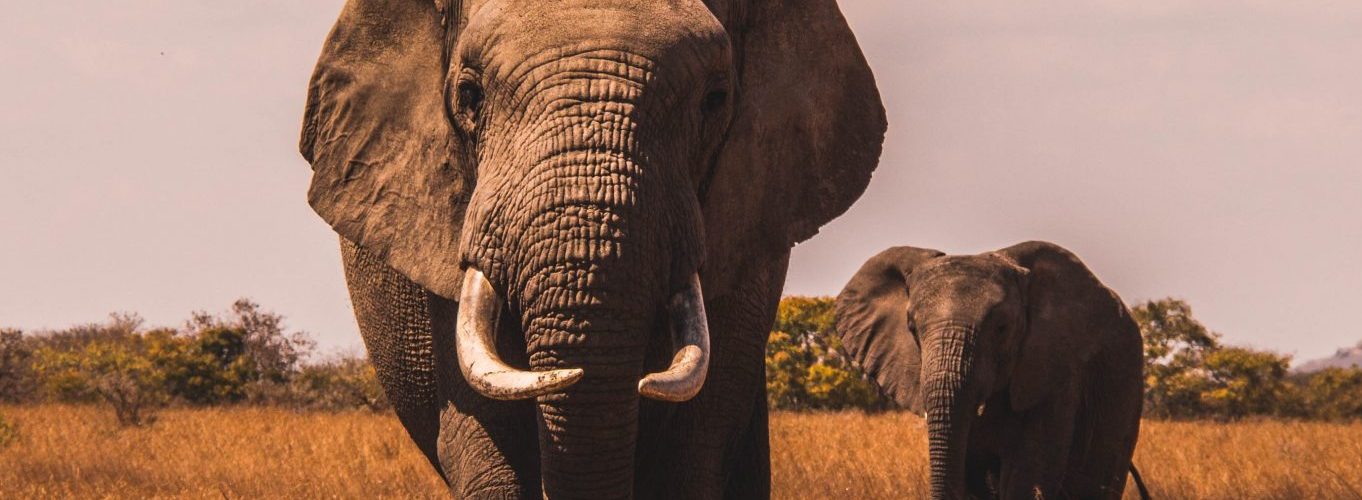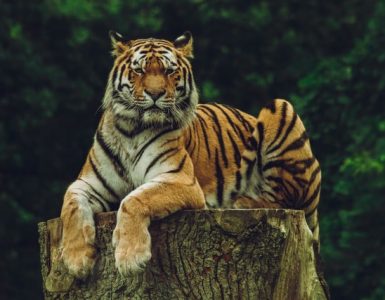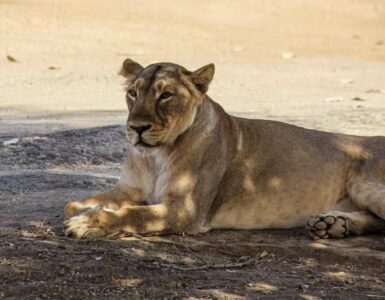Technology has revolutionized our daily lives, offering innovative solutions to tackle today’s and tomorrow’s significant challenges.
Protecting and restoring wildlife is the most pressing challenge facing humanity.
The world’s diverse natural habitats support several plant and animal species. However, the animal kingdom is under severe threat. Global environmental changes threaten wildlife, including land use, desertification, deforestation, and climate change. Furthermore, human activities, such as illegal wildlife trade, invasive species, and climate change, alter natural ecosystems.
In response, conservation efforts have intensified. With the advent of technology, wildlife conservation has undergone a paradigm shift. Innovations like drones, GPS tracking, and artificial intelligence are transforming conservation efforts, offering unparalleled tools to monitor, protect and study wildlife.
These technologies offer new opportunities for conservation, redefining the approach to protecting wildlife. They provide new avenues for research, enhanced surveillance capabilities, and more effective conservation strategies.
In the following sections, we will explore specific examples of how technology is being used to conserve wildlife.

Camera
Using remote camera traps was probably the first time we saw the role of technology in wildlife conservation. Traditionally what used to be manual exercise, the introduction of cameras has significantly contributed to tracking animals and discovering new species.
They provide a nonintrusive means of monitoring species’ behaviour, distribution, and diversity within a landscape and protect threatened wildlife and habitats from poaching and other illegal activities.
Not just on the land, underwater cameras provide access to monitor species diversity, abundance, and behaviour beneath the waves.
Drones
Drones have redefined conservation efforts by providing unprecedented aerial surveillance capabilities. Equipped with high-resolution cameras, these unmanned aerial vehicles can efficiently survey vast areas of remote and inaccessible terrain, providing real-time aerial imagery for wildlife.
This technology enables conservationists to track wildlife movements within or outside their habitats. Drones are also being deployed to monitor animal populations in urban areas.
The technology helps to calculate animal populations accurately, detect poaching activities early, assess habitat changes, and respond swiftly to threats.
Many animals are susceptible to hunting and poaching, especially at night. Thermal imaging cameras on drones allow for detecting poachers in hard-to-reach areas even in the dark.
GPS Tracking
Integrating GPS tracking devices in wildlife has transformed the way researchers collect data. By attaching GPS collars or tags to animals, conservationists can monitor movements, assess migration patterns and behaviour, and gain insights into their habitat preferences and the impact of human activities.
This technology helps to identify critical habitats, facilitate better conservation planning, and implement more effective wildlife management strategies.
In 2022, when the Indian government re-introduced Cheetahs, officially declared extinct in the country in 1952, they were fitted with GPS tracking machines. All eight Cheetahs brought from Namibia had radio collars tied around their necks. This helped forest officials carefully track cheetah movement in their new habitat.
Geographic information systems (GIS)
In 2021, Brazil’s National Institute for Space Research launched a remote sensing satellite – Amazônia-1, to monitor deforestation in the Amazon region. This was the first satellite to monitor forests and environmental disasters.
GIS technology has revolutionized wildlife conservation and forest management methods by integrating data from multiple sources like satellites, drones, and ground-based surveys and using them to make informed habitat management decisions.
Satellite imagery and remote sensing provide a macro view of ecosystems and landscapes. They track land cover changes, habitat fragmentation, and environmental impacts. For instance, remote sensing has monitored deforestation rates and their effects on wildlife.
Artificial Intelligence (AI)
AI’s role in conservation is rapidly expanding as it enables conservationists to monitor specific species, conduct population studies and make decisions about habitat protection.
Machine learning algorithms are used to analyze camera trap images, significantly reducing the time required to process data. Furthermore, AI is used in predictive modelling, helping to forecast poaching threats or potential human-wildlife conflict zones.
Genetic Technology
Advances in genetic technology have been crucial for identifying and conserving genetic diversity. Genetic markers help understand population structures and dynamics, aiding in species management. Genetic analysis has also clarified species classification and informed targeted conservation strategies.
Acoustic monitoring
Most animals produce sound for communication and other purposes. Similar to camera traps, acoustic sensors are deployed in the forests that collect and record animal sounds in a non-invasive way. This technology is particularly valuable in dense forest habitats, where cameras and drones might not be very effective.
Acoustic monitoring technology enables researchers to use sound to study wildlife, track movements, calculate populations, and analyse animal behaviour and ecological communities.
Acoustic monitoring has been especially useful for studying and conserving species like elephants, who are known to send vocalizations over long distances. The sensors capture low-frequency rumbles used in elephant communication to monitor their populations and track their movements between forests and urban habitats.
Immersive Technologies
Virtual reality (VR) and augmented reality (AR) can redefine the field of wildlife conservation.
These immersive technologies can create realistic simulations of wildlife habitats and animals, allowing people to experience the natural world in a new and engaging way. This can foster greater empathy for wildlife and inspire a new generation of conservationists.
A simulated experience created using VR can help students learn about wild animals, their food habits, physical features, characteristics and their importance in the ecology.
Challenges of Using Technology in Wildlife Conservation
However, conservationists hoping to harness the power of technology are faced with several challenges and constraints.
These include high upfront and maintenance costs, shortage of tech skills among users, limited capacity and access to training, competition for funding, duplication of effort, and the scalability and sustainability of tech solutions.
There are also concerns regarding the safety of animals through the use of certain technologies.
In the case of cheetahs re-introduction in India, the use of radio collar devices on the animal body for an extended period is suspected to cause skin infections and other diseases.
The future of wildlife conservation
It is interesting to observe that technology transcends the set norms and helps in areas that not many care about. A few years back wildlife conservation was under the realm of a government, forest authorities or very few individuals.
The use of high-resolution cameras and drones helped in making wildlife documentaries like the award-winning Our Planet, which showcased many unseen aspects of our wildlife to a wide variety of populations.
The combination of technology and environmental education was a significant step toward understanding our biodiversity. The interest in our wildlife has grown by leaps and bounds, which is visible in the increase of wildlife tourism and concern towards nature protection.
Given that climate change, urbanisation, and deforestation, continue to threaten our ecology, it is even more important to integrate technology in wildlife conservation.
As technologies like AI and Robotics advance, they offer new tools for preserving our Planet’s wildlife and biodiversity, thus synergizing human ingenuity with nature preservation.
Wrapping Up
After devastating bushfires that destroyed Australian wildlife in 2020, killing millions of animals, WWF along with other organizations set up many cameras across the landscape. The remote camera captured millions of images including images that did not feature animals. To get around this problem, they created an online platform that used AI to filter out blank images and find the ones that contain wildlife.
This interesting case highlights that no one technology can work on its own, there needs to be an interplay of different technological solutions. The need of the hour is combining accessible solutions that fit the purpose.
Global data sharing, local capacity building, more user-friendly technologies, and translation of tech insights into conservation action on the ground are crucial.
Moreover, it would be better if governments, NGOs, and the private sector including the tech giants could support and fund the use of technology in wildlife conservation.
Continued innovation, investment, and collaboration are essential to address the evolving needs of conservation efforts.
You might also like to read about Jungle Safaris in India.






Add comment